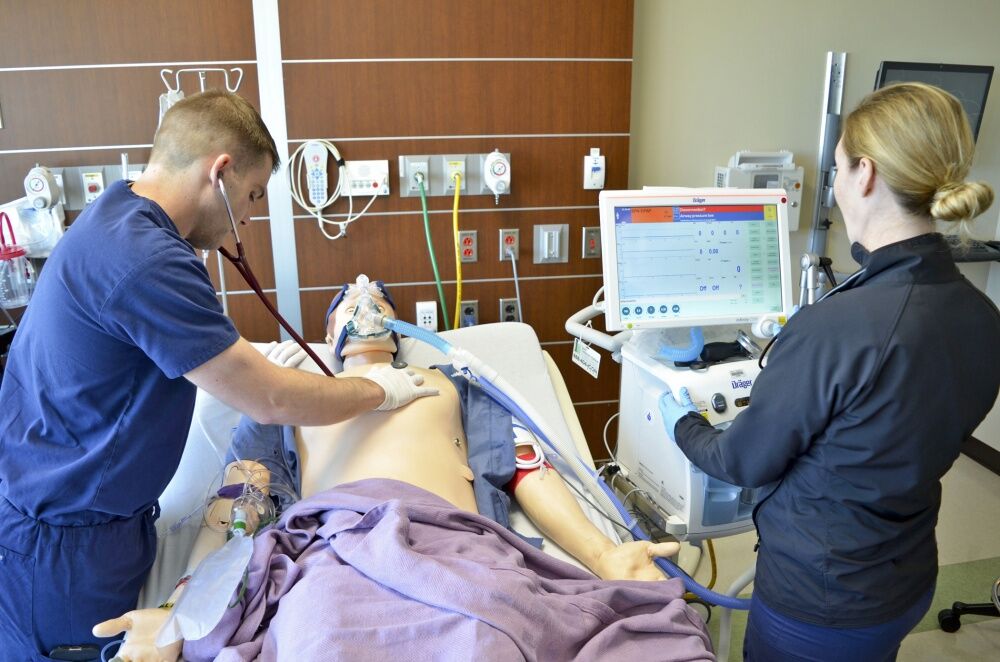
Carl R. Darnall Simulation Center
In many ways, the medical residents that are learning at Carl R. Darnall Medical Center are similar to those who are learning at hundreds of other hospitals across the country. They are absorbed into their books, and lectures, and clinical rotations. They see patients of varying types at all times of the day and night. They work tirelessly to learn the roles they will take with them after they complete their training. But in other respects, they are far different. Because the hospital they work at is the Carl R. Darnall ARMY Medical Center at Fort Hood, Texas, and they are not only being trained to care for the common afflictions associated with any hospital, they are also caring for the unique situations that arise from military combat and the effects thereafter. And their training is immersed in simulation-based methodologies thanks to the award-winning and accredited simulation program at Darnall.
The Simulation Lab at the facility is under the supervision of the Army Medical Command through a group called the Central Simulation Committee. Darnall is one of only ten military facilities in the country to train physicians in residency programs, and their simulation center is one of the shining stars of the program. Charles Steiner is the Simulation Center Administrator who “built the facility from scratch.” Steiner spent 20 years in the Army’s Airborne Infantry, and immediately following his service went back to school, became a Paramedic, and worked in 911 dispatch. “Not too long after that I was hired by Darnall to teach for EMS and in Health Promotion,” Steiner says. “In the time I was in that job, I taught over 100,000 soldiers self-care.”
In 2008, Steiner was hired to develop the Simulation Center. “Talk about a one-room school house…we had 125 square feet of space, and that included my desk!” Initially, he had to “beg, borrow, and steal to get all the equipment we needed,” pilfering beds, IV poles and the like from other parts of the hospital. “Man, I was like Radar O’Reilly back then…just find what you need!”
In 2016, CRDAMC moved into a brand new facility adjacent to the old building, and the Simulation Center moved with it into a wing of the 5th floor of the building. It now has 3,300 square feet that includes 8 simulation suites and a transition area. “We are also performing in situ simulations in various parts of the hospital,” Steiner adds.
The Program is embedded in all residency training at the facility, including those in Emergency Medicine, Family Medicine, Anesthesia, Oral Maxillofacial Surgery, and Obstetrics. In addition to the medical residencies, CRDAMC works with Nursing, Physician Assistants, Nurse Practitioners, and has worked with both military and civilian personnel. The Simulation Center has earned high marks for its work with physicians returning to the United States after deployment in the theater of combat. With deployments often lasting over a year, a provider often requires sharpening of their skills as it relates to non-trauma specific healthcare. In addition, the Simulation Center has been highly involved in training multiple disciplines in perinatal care and neonatal stabilization.
CRDAMC has received significant accolades for its successes. The University of Health Sciences’ bestowed the Program with the Excellence in Teaching Award for its role in shaping the next generation of providers in the military health system. In addition, the American College of Surgeons named CRDAMC number one in the Defense Department for surgical safety, and the Emergency Medicine Residency Program ranks in the top ten in the country for in-training exams. Much of this success points to the hands-on, psychomotor training provided through the Simulation Center. The foremost authority on simulation in the US Army is COL Shad Deering who is the former chair of the Army’s Central Simulation Committee. In a speech at SSH’s International Meeting for Simulation in Healthcare COL Deering praised the work of CRDAMC as a model for simulation. “It was amazing what Mr. Steiner has accomplished (at) Fort Hood, flourishing with a small amount of support and the reason for the success has been the quality of the simulation administrators in the CSC.” Steiner has now become a member of the Central Simulation Committee.
The Simulation Center became accredited by SSH in Teaching and Education this past year, and when asked why the Program wanted to become accredited, Steiner was emphatic with his enthusiasm for the achievement. “Accreditation helps validate your organization, offering an assurance in the eyes of those unaware of what simulation is about. For simulation, it advances the field by promoting standards of practice and advocating thorough preparation and sends a powerful statement to the community about an organization’s efforts to provide the highest quality of service.”
The advice that Steiner would give to any simulation program considering accreditation would be “Do it! It sends a clear message to the students, faculty, and simulation center staff that you’re a professional organization. You have the ability to produce competent medical professionals in a safe, structured environment that is regulated and mutually beneficial to all participants and staff.”
The Society for Simulation in Healthcare would like to congratulate CRDAMC for is success and exceptional commitment to simulation education.
To learn more about becoming an SSH Accredited Simulation Program, please visit https://www.ssih.org/Credentialing/Accreditation for details on eligibility requirements or contact accreditation@ssih.org.